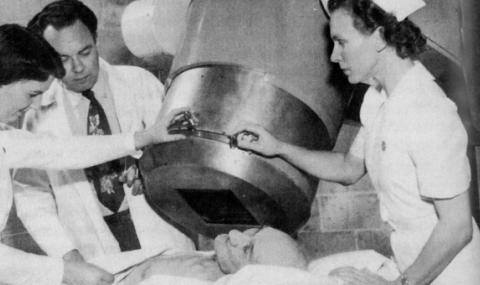| Gastric reflux |
Stomach contents travelling back up the esophagus. This can be a complication of feeding tubes, because the gate (sphincter) between the esophagus and the stomach is being kept open by the tube. |
| Gastrointestinal (GI) bleeding |
Bleeding in the GI system can happen in the stomach and esophagus or lower down in the bowels. Upper GI bleeding may be caused by ulcers, blood backing up from an injured liver, or the physical stress of critical illness. Lower GI bleeding can be a result of inflammation, infection, disease, or injury. |
| Ileus |
Ileus happens when the contents in the GI system stop moving. Usually food is kept moving along by smooth muscle contractions controlled automatically by the brain. If this motion stops in one area or along the whole GI tract, a build-up of wastes can occur. This makes it more difficult for the bowels to get moving again. |
| Jaundice |
Jaundice a yellowing of the whites of the eyes and the skin. It is caused by a build up of bilirubin in the blood, and may mean the liver is not working properly. |
| Cirrhosis |
A condition of the liver as the result of many different diseases, such as hepatitis. The surface of the liver becomes scarred and does not function well. |
Portal hypertension
Back to top
|
The portal vein is a large vessel going into the liver from the vessels around the bowels. It carries everything that has been absorbed by the intestines to the liver for cleaning and processing. This includes nutrients as well as medications and toxins. If the liver becomes scarred, the pressure of the blood in the portal vein goes up. The fluid can then back up causing higher blood pressures in the veins connected to this system, such as those that line the esophagus. |
| Hepatic encephalopathy |
If the liver does not process toxins out of the blood, they can build up. The brain is very sensitive to toxins and can be effected by the breakdown of liver function. The result is impaired thinking, a decreased level of consciousness, cerebral edema and coma. |
| Ascites |
The collecting of fluid in the abdomen can be a sign of liver disease. |
| Obstructions |
The GI system can become blocked in a number of different ways. The gall bladder can be blocked by a gall stone or narrowing of the tube that feeds bile into the small bowel. The bowels can become blocked up by wastes if they are not stimulated to keep moving. The duct from the pancreas to the small intestine can be blocked as well, leading to pancreatitis. |
| Pancreatitis |
The inflammation of the pancreas. This is usually the result of a block in the duct leading to the small intestine. It is problematic because the pancreas makes substances that help digest all kinds of foods. When these substances have no way out, they start to digest the pancreas |
| Malabsorption |
The inability to absorb enough nutrients from food. There are many situations that can cause malabsorption. If a person has nausea, vomiting, and diarrhea, their bowels are not given enough time to take nutrients out of the food. If the bowel has been damaged by disease (i.e. Crohn’s) or shortened by surgery or trauma it is less effective at pulling nutrients from food. Malabsorption can lead to short supplies of essential nutrients, vitamins, and minerals in the body. |
| Diabetes |
Diabetes is the inability of the pancreas to make enough insulin to process the blood glucose so the cells of the body can use it. Sometimes the body makes no insulin (type I). More commonly, the body makes some insulin but either it is not making enough, or the body is not able to use it (type II). Some diabetes can be managed with a change in diet. Other times people need to take insulin. |
| Hypoglycemia |
Low blood sugar. Hypoglycemia has a number of causes. It is treated by raising the level of glucose in the blood to the normal range. |
Hyperglycemia
Back to top
Go back to Gastrointestinal System |
High blood sugar. People with diabetes often struggle to keep their blood sugar down in the normal range. It can be treated with diet control or insulin. |



